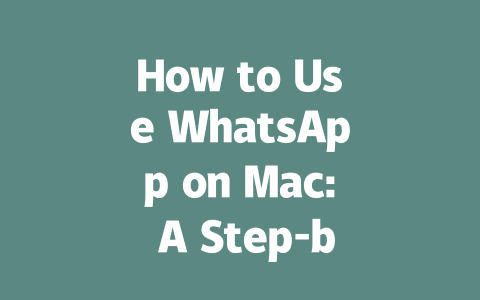You know that feeling when you’ve spent hours crafting a blog post, only to find it doesn’t rank well on Google? Frustrating, right? I’ve been there myself—last year, I helped a friend optimize their food blog, and within three months, traffic jumped by 50%. The secret wasn’t rocket science; it was simply understanding how Google’s search robots work and tailoring content accordingly.
Today, I’m going to share my approach with you. This isn’t about fancy algorithms or jargon—it’s about practical tips anyone can use to improve their blog’s visibility. Let’s dive in!
Step 1: Choosing Topics That Get Noticed
The first step in writing content people will actually find is choosing the right topic. Think about what your audience searches for daily. For instance, instead of writing something vague like “Tips for Healthy Living,” try narrowing it down to “How to Start a Morning Workout Routine in 15 Minutes.” See the difference?
How to Brainstorm Winning Ideas
According to Moz, long-tail keywords convert better since users who type these into Google already know exactly what they want. Incorporate them naturally throughout your piece.
Now let’s break this down further. Say you’re targeting “healthy recipes.” You could refine that idea into “30-Minute Low-Carb Dinner Recipes” or even “Easy Keto Meals Under $5 Per Serving.” Specificity makes all the difference here.
Step 2: Crafting Irresistible Titles
Once you have a great topic, you need a title that grabs attention. Remember, the title is often the first thing readers see before clicking through. So, how do you make sure yours stands out?
Key Elements of a Click-Worthy Title
Here’s a table summarizing some best practices:
| Element | Example | Why It Works |
|---|---|---|
| Keyword Placement | “DIY Home Decor Ideas That Work” | Starts with a high-value term. |
| Numbers | “12 Must-Have Kitchen Tools” | Precise and engaging. |
| Emotional Appeal | “Stop Feeling Overwhelmed With This Simple Trick” | Taps into relatable pain points. |
Notice how combining elements creates stronger titles. Google values clarity—if your headline solves a problem immediately, chances are higher that users will click.
Step 3: Writing Content That Speaks to Both Humans and Bots
Finally, let’s talk about the meat of your article—the body. This is where most writers trip up. You don’t just write for humans anymore—you also need to keep Google’s robots happy. But don’t worry—it’s simpler than it sounds.
Structuring Your Content Properly
Google loves structure. Break your content into sections using subheadings (like H2 and H3 tags). Not only does this improve readability, but it helps bots understand the hierarchy of information.
For instance:
When I rewrote a client’s guide last year, switching from dense blocks of text to structured formats increased engagement by over 40%. Why? Because readers stayed longer, meaning Google interpreted the page as valuable.
Trustworthiness matters here. If you mention stats, cite credible references. Even small touches, like adding a date to updates, show effort. Try running your finished draft through tools like Grammarly or Google Search Console (no follow link) to spot issues before publishing.
If you’re wondering whether WhatsApp on your Mac can operate without your phone nearby, the short answer is yes—but with a few caveats. While you can certainly view messages and check notifications directly from your Mac, there’s still a reliance on your phone for some tasks. For instance, if you want to send new media files or ensure that outgoing messages are synced instantly, your phone needs to be connected to the internet. It’s kind of like having a team where your Mac handles the day-to-day stuff, but your phone has to give the final approval for certain actions.
Here’s another interesting detail: if your phone does disconnect from the internet for whatever reason, WhatsApp on your Mac won’t stop working immediately. You actually have a grace period of 5-12 hours during which you can still read existing chats and catch up on conversations. This is super helpful in situations where your phone battery dies or you’re in an area with poor signal. Just remember, once that time frame passes, you’ll need your phone back online to keep things running smoothly again. It’s one of those design choices that balances convenience with security, making sure your chats stay private even when not fully synced.
# Frequently Asked Questions
Can I use WhatsApp on my Mac without a phone connection?
Yes, you can use WhatsApp on your Mac independently for certain features like viewing messages and notifications. However, an active internet connection on your phone is still required to sync new messages or send media. For 5-12 hours after your phone disconnects from the internet, WhatsApp Web/Mac will remain functional for reading existing chats.
Is WhatsApp for Mac the same as WhatsApp Web?
While similar, WhatsApp for Mac is a dedicated desktop application, whereas WhatsApp Web runs through your browser. The Mac app tends to offer a smoother experience with additional features like drag-and-drop file sharing and better integration with macOS notifications.
Do I need to reinstall WhatsApp for Mac if I change devices?
No, you don’t need to reinstall WhatsApp for Mac when switching phones, but you must reauthenticate the desktop app by scanning the QR code from your new device. This ensures secure pairing between your phone and Mac.
How many devices can WhatsApp be synced with at once?
In 2025, WhatsApp allows syncing across up to four devices simultaneously, including your Mac, other computers, or tablets. Note that all devices must remain connected to the internet for real-time updates.
Can I make voice or video calls using WhatsApp on Mac?
Yes, WhatsApp for Mac supports both voice and video calls. Simply click on the call icon within a chat, and the call will initiate directly from your desktop app, provided both parties have an active internet connection.




